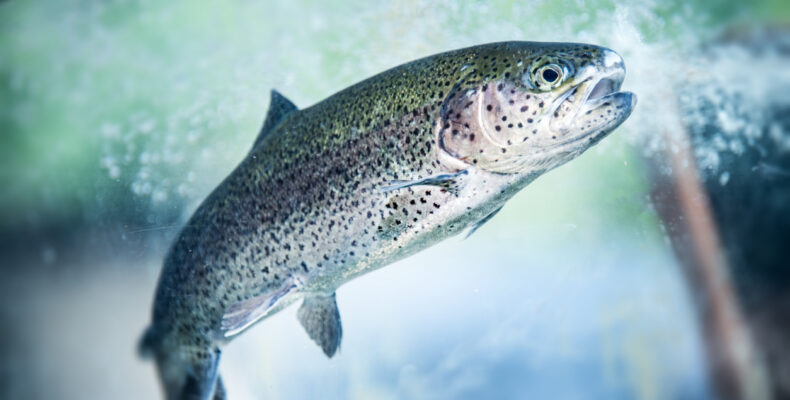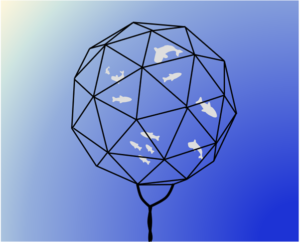
Aquaculture for our changing world
Climate change is already having an observable impact on food security through increasing temperatures, changing precipitation patterns, and greater frequency of extreme weather events. Combined with an ever-growing population, these factors place an increasing burden on food production. Drastic innovation will be required in the coming years to ensure ongoing food security, with aquaculture sure to play a key role in sustaining the population.
Aquaculture describes the process of farming aquatic species in fresh or sea water. In the last decade the term aquaculture has evolved from traditional fish and seafood farming to include a vast number of different technologies.
New ideas
Innovation in this area is endless, ranging from development of more sustainable aquafeed formulations and feed management to AI monitoring systems, new farming devices and molecular technologies.

Submerged geodesic sphere-type enclosures (illustrated left), such as Ocean Farm Technologies’ Aquapod™, are one example of impressive innovation paving the way for future growth in the sector. These pods act as a moored farming system for various species of aquatic life. Their triangular panels are formed from fiberglass and reinforced plastic with galvanized steel wire netting spanning each panel to protect against predators. The pods are designed to be raised or lowered to maintain specific water conditions, such as a fixed temperature. This tailored approach to moored farming aims to improve the wellbeing of the aquatic animals, protecting them from changing sea conditions and top predators.
Cermaq, a Norway-based fish farming giant has also been making waves in this area of technology with their novel iFarm® project. The objective of this project is to use AI technology to monitor not just entire enclosures of salmon, but each individual fish. Cermaq reports that the iFarm sensors recognize individual salmon based on their personal dot pattern, which makes it possible to keep track of the number of fish, size, and possible signs of disease. An entire sea site in Vesterålen, Norway is now equipped with a fully stocked iFarm setup for full-scale testing of the concept and technology.
Looking ahead
With few big players, the aquaculture industry remains relatively young with SMEs being responsible for the majority of innovation, and research institutes such as universities supporting technology development. Despite being relatively young, this sector is fast growing, with a 2022 publication by the Food and Agriculture Organization of the UN (FAO) reporting a 550% rise in global aquaculture production from 1990 to 2020.
For many of these businesses, their competitive advantage is underpinned by intellectual property. In this emerging field, patents are indispensable in solidifying intellectual property as an asset to increase the value of a company and attract investment. For example, the Chilean venture Ocean Arks Tech (OATECH) obtained a patent (No. 201601709) for a self-propelled fish farm designed to seek optimal water conditions for fish production. The 170-meter vessel named Ocean Ark is designed to avoid algal blooms as well as areas of low oxygen or low PH. OATECH has since gained a U.K-based strategic ally, Ocean Sovereign, and recently won approval from the marine classification society, RINA, for their invention.
As innovation in this sector progresses, companies are moving to protect their inventions by building a defensible patent position. Patents and other registered rights can also create new opportunities for businesses, including securing reliable income through licencing and gaining a competitive advantage by limiting the freedom to operate of others.
Recently, feed giant BioMar® was ordered to pay £3.12m to Norwegian fish health and research company STIM for infringement of its patent for SuperSmolt® FeedOnly, which improves the consistency of salmon smoltification under constant light. This decision highlights the importance of investigating the patent landscape early on to secure a safe path to production. Reviewing the patent landscape may also reveal potential collaboration partners and can reduce the time to market, through utilising licenced technology.
With annual production of aquatic animals from aquaculture projected to reach 100 million tonnes in 2027, growth in this area appears sure to continue and we can expect the trend for increased patenting in this sector to accelerate.
If you would like to discuss how intellectual property could benefit your company or think you have an idea which might be patentable, please contact the authors – Ana Vesperinas and Amy Kelly – or your usual Barker Brettell attorney.



